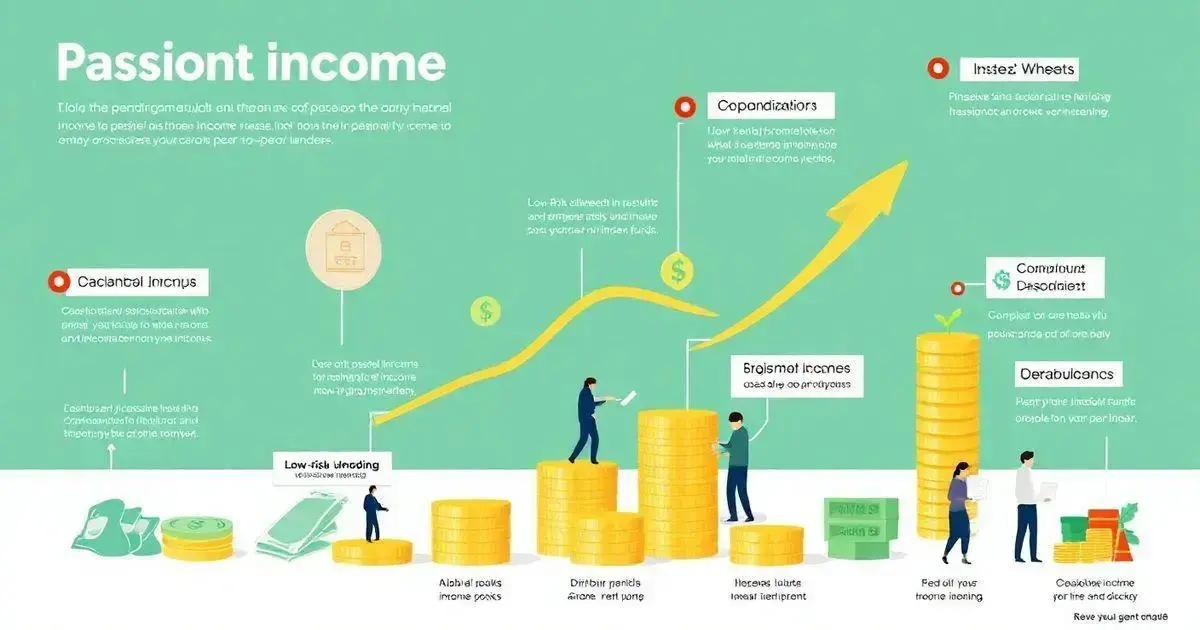Investing is one of the most powerful ways to build wealth and achieve financial freedom. While many people associate investing with complexity, high risks, or the need for large amounts of money, the truth is that anyone can start investing with the right knowledge and strategy. Understanding the basics of investment is the first step toward making informed financial decisions that can lead to long-term wealth creation.
In today’s fast-paced world, simply saving money is not enough to secure your financial future. Inflation gradually reduces the purchasing power of cash, meaning that money left idle in a savings account will lose value over time. Investing allows you to grow your wealth by putting your money to work, earning returns that compound over time. This principle is what separates those who merely save from those who build true financial security.
Whether you are a complete beginner or someone looking to refine your investment strategy, learning the fundamentals is essential. In this article, we will explore the core principles of investing, the different types of investments available, and how to start building wealth with a strategic and disciplined approach.
Passive Income Ideas for Beginners: A Step-by-Step Guide
Getting started with passive income requires a clear understanding of the concepts and strategies involved. In this step-by-step guide, we’ll break down the process into manageable chunks, starting with identifying your financial goals and risk tolerance. We’ll then explore the various passive income streams available, such as dividend-paying stocks, real estate investing, and peer-to-peer lending. By the end of this guide, you’ll have a solid foundation to build your own passive income plan.
Dividend-paying stocks offer a unique opportunity to generate passive income through regular dividend payments. To get started, you’ll need to research and identify high-dividend stocks with a strong track record of paying consistent dividends. You can then invest in these stocks through a brokerage account or a robo-advisor. As the dividends accumulate, you can reinvest them to grow your portfolio and increase your passive income.
Renting out a spare room on Airbnb can be a lucrative passive income idea, especially for individuals living in tourist areas. To get started, you’ll need to declutter and furnish the room, then set a competitive price based on local listings. You can also offer additional services, such as laundry and breakfast, to increase revenue. By attracting a steady stream of guests, you can generate a significant passive income stream.
Peer-to-peer lending is a low-risk investment opportunity that allows you to lend money to individuals or small businesses in exchange for interest payments. To get started, you’ll need to research and select a reputable P2P lending platform, then deposit funds into your account. You can then choose which loans to invest in, based on factors such as interest rate and creditworthiness. As the loans are repaid, you’ll earn interest and grow your passive income.
Index funds and ETFs are popular investment vehicles that offer broad diversification and low fees. To get started, you’ll need to research and select a reputable index fund or ETF provider, then deposit funds into your account. You can then invest in a range of assets, such as stocks, bonds, and real estate, and earn passive income through dividends, interest, and capital gains.
Creating a Passive Income Stream through Dividend-paying Stocks

Dividend-paying stocks offer a unique investment opportunity for passive income seekers. These stocks provide a regular stream of income in the form of dividend payments, which can be reinvested to generate even more passive income. By investing in high-dividend stocks with a strong track record, you can create a sustainable passive income stream. In this article, we’ll explore the benefits and risks of dividend-paying stocks, and provide a step-by-step guide to getting started.
Renting out a spare room on Airbnb can be a lucrative way to generate passive income, especially for individuals living in tourist areas. By furnishing and decorating the room, and setting a competitive price, you can attract a steady stream of guests and earn a significant passive income. In this article, we’ll provide a comprehensive guide to getting started with Airbnb, including tips on pricing, marketing, and guest management.
Peer-to-peer lending is a low-risk investment opportunity that allows you to lend money to individuals or small businesses in exchange for interest payments. By diversifying your portfolio across multiple loans, you can create a sustainable passive income stream. In this article, we’ll explore the benefits and risks of peer-to-peer lending, and provide a step-by-step guide to getting started.
Index funds and ETFs are popular investment vehicles that offer broad diversification and low fees. By investing in a range of assets, such as stocks, bonds, and real estate, you can create a sustainable passive income stream. In this article, we’ll explore the benefits and risks of index funds and ETFs, and provide a step-by-step guide to getting started.
Renting Out a Spare Room on Airbnb: A Lucrative Passive Income Idea
Renting out a spare room on Airbnb can be a lucrative way to generate passive income, especially for individuals living in tourist areas.
With the rise of the sharing economy, Airbnb has become a popular platform for travelers to find unique and affordable accommodations.
By furnishing and decorating the room, and setting a competitive price, you can attract a steady stream of guests and earn a significant passive income.
In fact, many hosts on Airbnb earn an average of $1,000 to $2,000 per month, making it a viable option for those looking to supplement their income.
Passive Income through Peer-to-Peer Lending: A Low-Risk Investment

Peer-to-peer lending is a low-risk investment opportunity that allows you to lend money to individuals or small businesses in exchange for interest payments.
Unlike traditional investments, peer-to-peer lending offers flexibility and diversification, allowing you to spread your risk across multiple loans.
By lending to borrowers with a good credit history and stable income, you can earn a steady stream of passive income with minimal risk.
In fact, many peer-to-peer lending platforms offer returns of 5-7% per annum, making it an attractive option for those seeking a low-risk investment.
How to Start Investing with a Solid Strategy
Starting your investment journey requires a clear plan. Here are some essential steps to take:
1. Set Clear Financial Goals
Before you begin investing, define your financial objectives. Are you investing for retirement, buying a house, or simply growing your wealth? Your goals will influence your investment choices and risk tolerance.
2. Build an Emergency Fund First
Before putting money into investments, ensure you have an emergency fund with at least three to six months’ worth of living expenses. This safety net will protect you from financial hardship in case of unexpected expenses.
3. Determine Your Risk Tolerance
Your risk tolerance depends on factors like age, financial situation, and investment experience. Younger investors can generally afford to take more risks, while those nearing retirement may prefer safer, stable investments.
4. Start with Low-Cost, Diversified Investments
Beginners should consider low-cost index funds or ETFs, which offer diversification and steady growth without the need for constant market monitoring.
5. Automate Your Investments
Many successful investors follow a “set and forget” approach by automating their investments. Setting up automatic contributions to your investment accounts ensures consistency and reduces emotional decision-making.
6. Reinvest Dividends
Reinvesting dividends can significantly boost your wealth over time. Instead of cashing out earnings, reinvest them to buy more shares and take advantage of compound growth.
7. Monitor and Adjust Your Portfolio
While long-term investing requires patience, it’s important to periodically review your portfolio to ensure it aligns with your financial goals and risk tolerance.
Maximizing Your Passive Income with Index Funds and ETFs
Index funds and ETFs are popular investment vehicles that offer broad diversification and low fees.
By investing in a range of assets, such as stocks, bonds, and real estate, you can create a sustainable passive income stream.
One of the key benefits of index funds and ETFs is their ability to track a specific market index, such as the S&P 500, allowing you to benefit from the growth of the overall market.
Additionally, many index funds and ETFs offer a low minimum investment requirement, making it accessible to beginners.
Maximizing Your Passive Income
With a long-term investment approach and a diversified portfolio, you can maximize your passive income and achieve your financial goals.
Conclusion: Take Action and Start Building Wealth Today
Investing is not just for the wealthy—anyone can start with the right knowledge and mindset. By understanding the basics, setting clear financial goals, and staying disciplined, you can grow your wealth and secure your financial future.
The most important step is to start. The sooner you begin, the more time your investments have to grow. Whether you start with small amounts or large sums, consistency and patience are key to long-term success.
Are you ready to take control of your financial future? Begin today and start your journey toward financial freedom and wealth creation!
Frequently Asked Questions about Passive Income
What is passive income and how can I get started?
Passive income is a stream of income that requires little to no effort to maintain, such as dividend-paying stocks, real estate investing, or peer-to-peer lending. To get started, research and understand the different options, then take action by investing in a diversified portfolio.
How can I create a passive income stream through dividend-paying stocks?
Invest in high-dividend stocks with a strong track record, and reinvest the dividends to grow your portfolio. You can also consider dividend-focused exchange-traded funds (ETFs) or mutual funds.
Is renting out a spare room on Airbnb a lucrative passive income idea?
Yes, renting out a spare room on Airbnb can be a lucrative passive income idea, especially for individuals living in tourist areas. Furnish and decorate the room, set a competitive price, and manage guest expectations to ensure a smooth and profitable experience.
What is peer-to-peer lending and how does it work?
Peer-to-peer lending is a platform where individuals lend money to others in exchange for interest payments. You can lend to borrowers with a good credit history and stable income, earning a steady stream of passive income.
How can I maximize my passive income with index funds and ETFs?
Invest in a range of index funds and ETFs that track different asset classes, such as stocks, bonds, and real estate. This diversification will help you ride out market fluctuations and achieve your financial goals.

